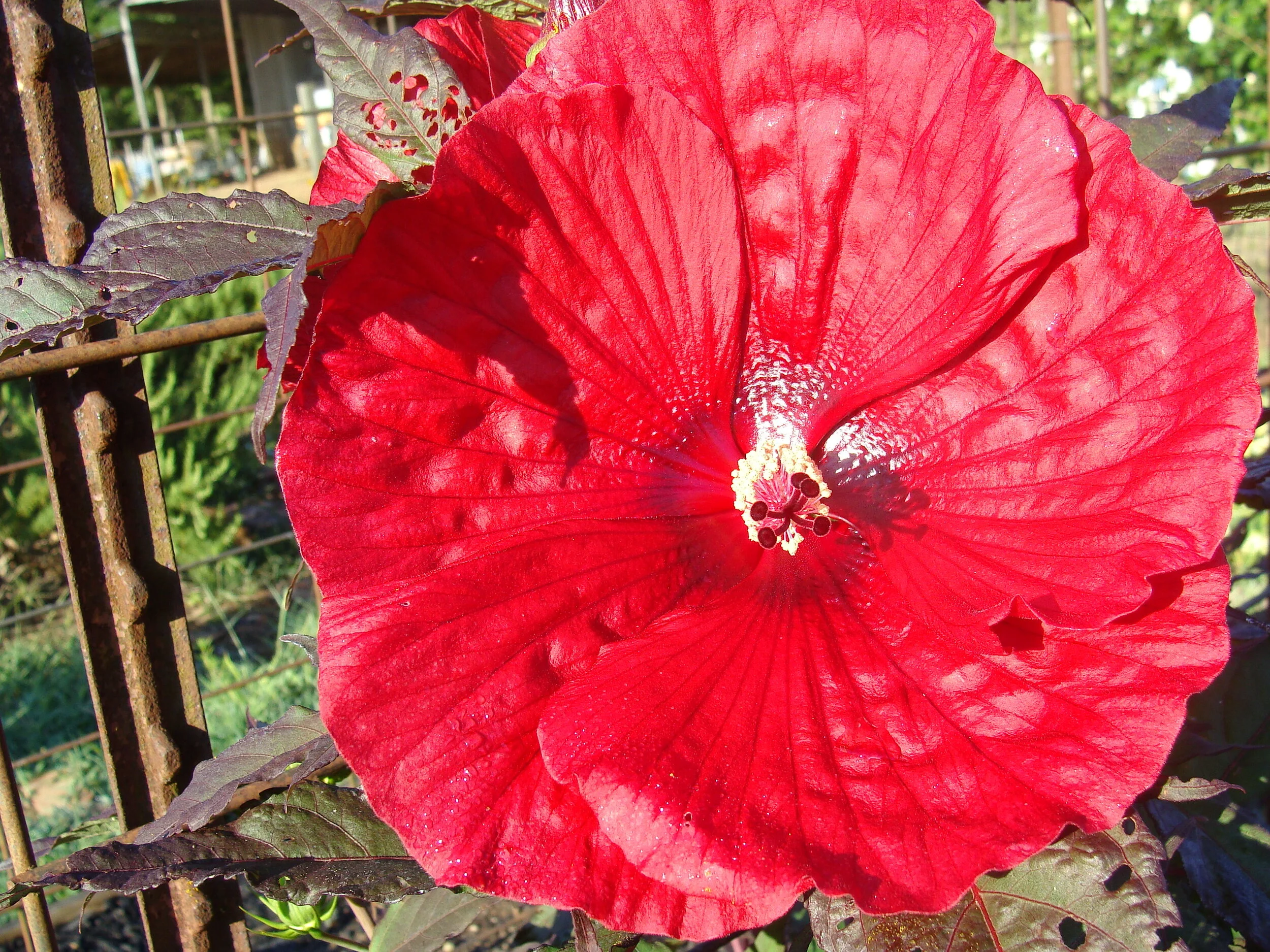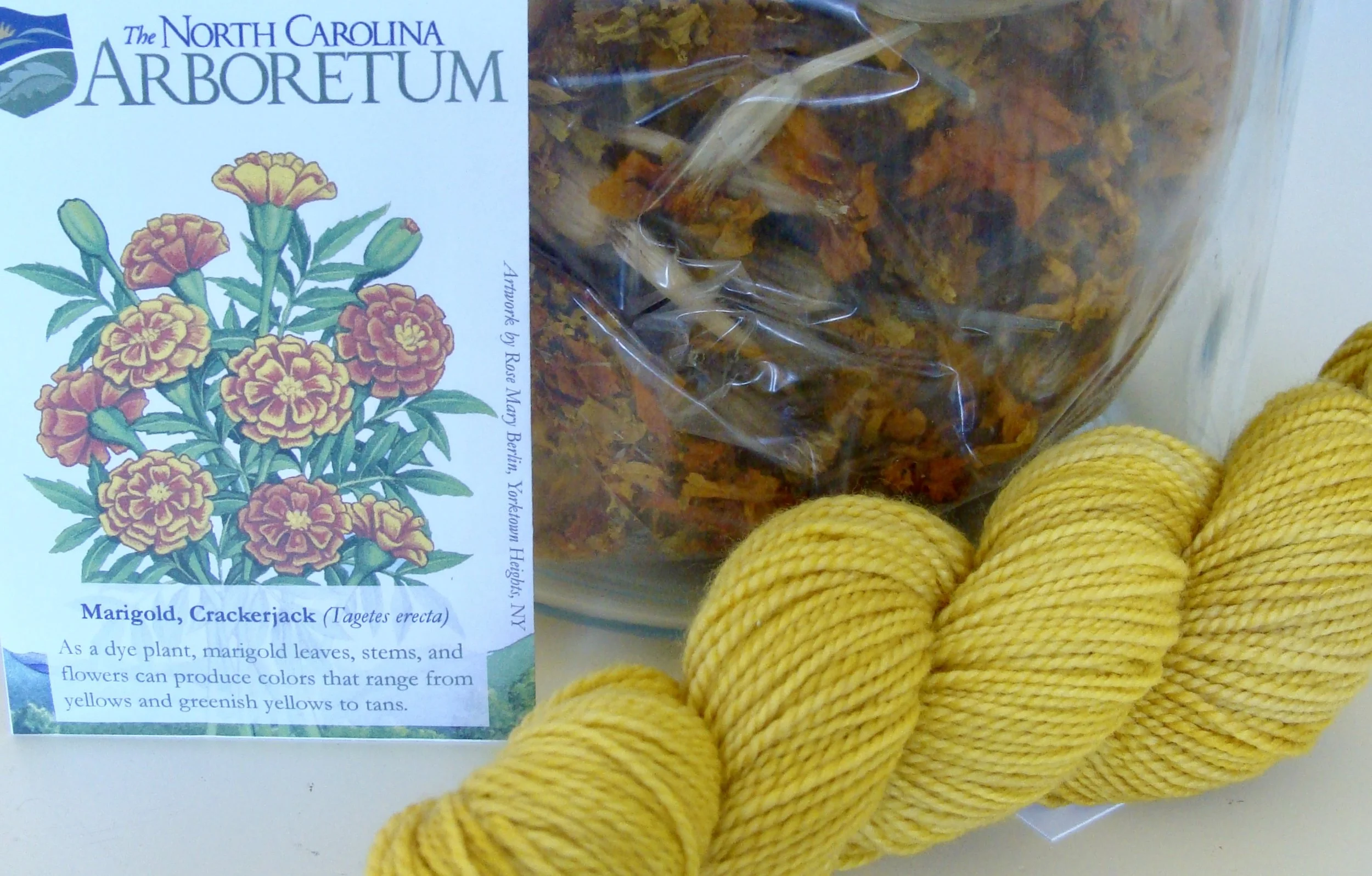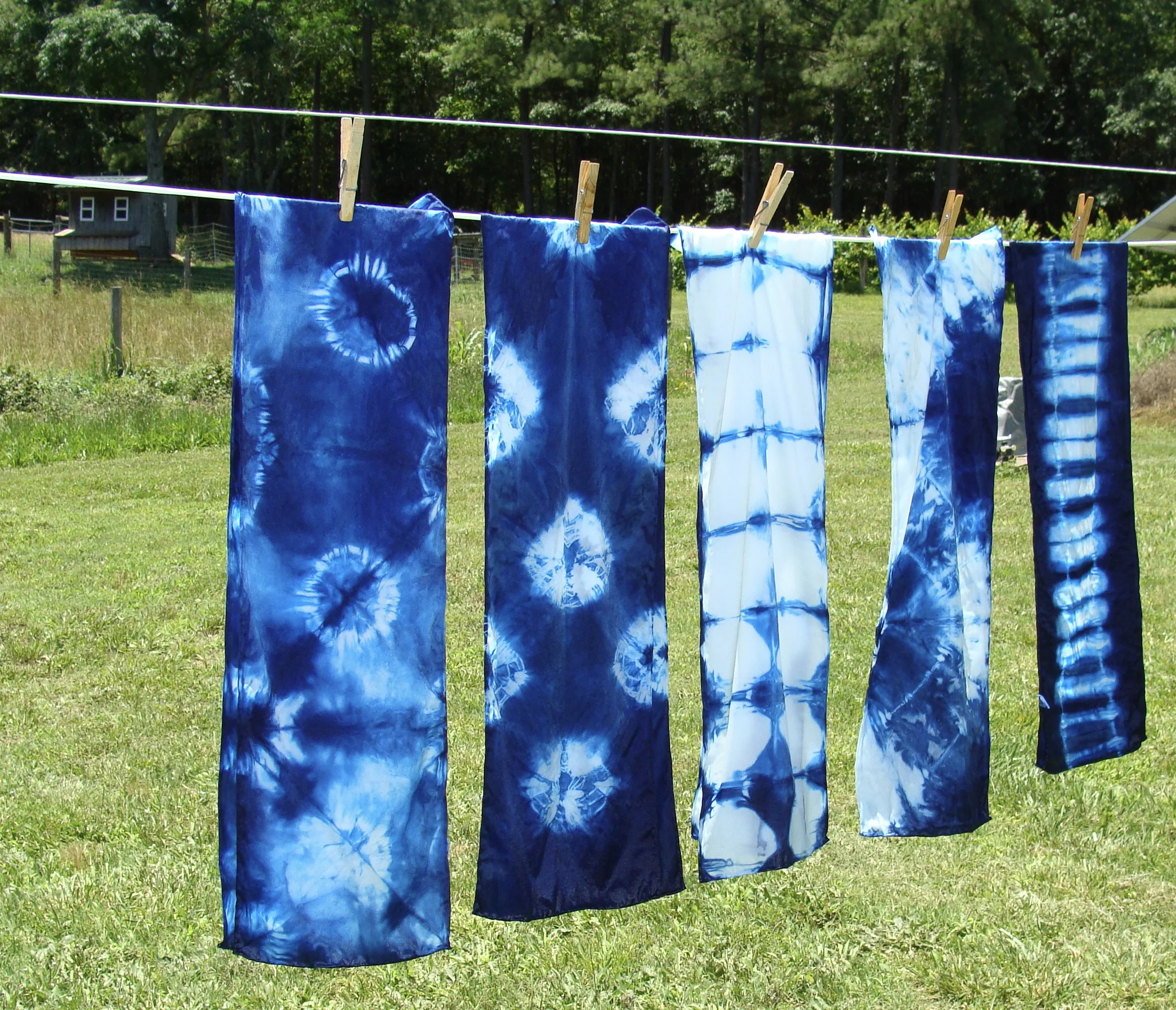Let's Dye . . . Hibiscus
It’s been a while since I’ve posted on natural dyeing, so today I thought I would write about dyeing with hibiscus.
Hibiscus is an interesting natural dye material as the color(s) achieved are highly variable; so much so that ‘surprise’ would be my key descriptor. Hibiscus is not commonly seen in publications and classes on natural dyeing; I suspect that may be due to the aforementioned variability in results.
Why did I choose to grow hibiscus in my dye garden? Well, in addition to its dye properties, it is a beautiful flowering plant which highly appeals to my gardening ethos.
There are over 200 diverse types of plants in the species Hibiscus. Hibiscus syriacus is a familiar shrub or small tree commonly known as Rose of Sharon or Shrub Althea. Confederate Rose [Hibiscus mutabilis] is another lovely shrub growing in warmer climates (Zones 7 to 11). Then there is the colorful and exotic flowers of the Chinese Hibiscus [Hibiscus rosa-sinensis]; often used for container plantings unless you reside in a tropical climate.
However, for natural dyeing we need the Hardy Hibiscus [Hibiscus moscheutos] also known as Rose or Common Mallow. Hardy hibiscus cultivars were developed from the native rose mallows that grow wild in sunny marshes along the eastern coast of the US. They are tall perennial plants growing to four feet in height. These sun loving hibiscus can be grown from plants or seeds in Zones 5 to 9. They are large-leaved and their remarkably large flowers can measure up to 10 inches across. While each flower lasts only one day, new ones continue to emerge from early/midsummer until frost.
Dark red flowering hibiscus are the most valuable for dyeing. Pink flowers give golds and tans and the white flowers “aren’t worth gathering” according to Rita Buchanan in “A Dyer’s Garden”. If memory serves me, my plants are the cultivar ‘Lord Baltimore’.
I have three plants which afford me more than enough blooms for my dyeing purposes. The flowers need harvested every day or two. The blossoms can be used fresh or stored in the refrigerator for up to two weeks until you have collected enough for dyeing. Discard the green calyx and save just the petals.
To extract the dye pigment, cover the flowers with water, simmer for 30 minutes and then strain. The dye bath will be mucousy prior to straining.
Add mordanted fiber to the dye stock and simmer one hour. Jenny Dean in Wild Color wrote that no mordant was necessary on animal fibers, however other sources recommend an alum (aluminum sulfate) mordant which is what I used. I dyed with equal weights of dyestuff and fibers.
I dyed wool yarn and silk fabric.
According to Rita Buchanan, dark red flowers produce “Impressive, but unpredictable colors. Every time I use hibiscus, I get different colors - lilac, purple, mauve, green, gray, brown, black”.
My own dyeing experience held true to this capricious nature in color results. The wool dyed a tan while the silk turned out a mauve brown.
The following are some additional hibiscus dyeing escapades.
Repotedly, using modifiers will produce different color/shade variations. For example, I’ve read the pigment is very sensitive to pH; so adding vinegar or ammonia to the dye bath or dipping the dyed fiber in either solution “causes dramatic color shifts”. I dipped both the wool and silk in an ammonia solution (alkaline). I can’t say there was a dramatic color shift; essentially none in the wool and perhaps slightly more mauve in the silk. (see top right in photo above compared with original results photo).
I’ve also read that for the darkest colors, the fiber should soak in the dye bath for a day or two after simmering. The photo above shows on the left a skein and silk dipped in the ammonia solution and then placed back into the dyebath for another 24 hours. In this case, the wool is a darker brown with olive green undertone and the silk is noticeably mauver.
The small skein is a different wool yarn (merino) with no alkaline dip, however soaked in the dye bath for two days. It’s a little difficult to see in the photo, but in real life it is a very dark olive.
Next, I tried some shibori resist dyeing with hibiscus on silk scarves. This was a different dyebath, although done in the same manner as described above. The scarves were mordanted with alum, but no other modifiers were used.
Wow! This produced some very interesting results! There were several shades of olive green. There was also some beautiful purple and greens (scarf on left) that appeared iridescent depending on the light.
Like many natural dyes, hibiscus is seasonal in that you have a flush of blooms occurring at a rate that is more than you can and/or want to use at the time of harvest. In that case, they can also be dried for later use. I’ve done that successfully; see photo above (top shelf on left). I’m not sure about freezing the blooms for later use.
Resources




















